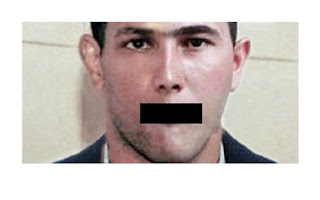On the cover of the catalogue of the survey exhibition South African Photography 1950-2010, on show at the Pretoria Art Museum, is an image that is by now familiar and dear to South Africans.
Bob Gosani’s Treason Trial: End of Round One 1957 shows Nelson Mandela in his boxing trunks with hands bandaged, sparring with professional featherweight Jerry Moloi on the rooftop of a newspaper building in downtown Jo’burg.
After long days of sitting in the dock during the preliminary hearings of the treason trial, Mandela would keep himself fit and focused by boxing at Moloi’s gym in Orlando every day.

Curated by the Seippel Gallery, in conjunction with the Bailey African History Archive, this exhibition charts a visual history of South Africa through three distinct periods: apartheid 1950 to 1976, struggle 1976 to 1994, and freedom 1994 to 2010.
A repository of memory
In the past 60 years the lens of South African photography has had a lot to look at, with apartheid and the struggle looming large in the country’s visual imagination. Yet the virtue of the medium is that it serves as a repository of memory; a reminder of who we once were, where we have come from and where we are going. In this way it not only records the bad but also reveals the resilience of the human spirit.
When looking at such a collection one is immediately struck by the sensation of gazing back through time, of looking at the faces of our predecessors. What is most striking about the exhibition is this human presence it gives to such a politically charged past.
Coupled with the fraught ambiguity being faced in the present, it provides a show that encapsulates the depth and breadth of the contemporary South African experience.
Alf Kumalo’s portrait of a sprightly Hugh Masekela doing a star jump with trumpet in hand in Sofiatown 1956 celebrates the vitality of the urban jazz culture of the time. Ranjith Kally’s image of Miriam Makeba with two women (1957) portrays the stylish sophistication of an era that was soon to end.
Impending dislocation
This undertone is emphasised in Peter Magubane and Bob Gosani’s two images, both titled What Will Happen in the Western Areas, which address the question of impending dislocation that was soon to end this jubilant time as the residents of Sophiatown were relocated to Meadowlands.
Viewing the section about the struggle, one is struck by the heightening prevalence of violence that was to characterise South African society during this period. Appropriately beginning this grouping is Sam Nzima’s now ubiqutous series of a fatally wounded Hector Pieterson being carried through the streets of Soweto by Mbuyiswa Makhubu after the student uprisings in 1976.
Silent reflection
Yet these representations of extreme violence are offset by other, quieter images such as Gideon Mendel’s portrait of a teenage boy in the back of a police van. During the states of emergency in the 1980s it was illegal to photograph political gatherings, leading to Mendel’s incarceration with the boy. As he grips the bars along the windows, the nameless boy’s still gaze almost challenges the photographer, issuing a helpless plea and providing a moment for pause and reflection.
This theme of silent reflection seems to carry through to the next section titled Freedom. As Wiebeke Ratzburg observes, South African photography draws its significance from a political dimension. Yet the politics of this dimension have changed. The struggle is over and a new democratic dispensation has begun. With this momentous shift, so too has the visual language of photography also found itself adapting to the challenges of representing an era in the wake of the human tragedy we call apartheid.

George Hallet’s portrait of Jann Turner standing behind Eugene de Kok at the Truth and Reconciliation Commission is a chilling representation of Turner coming face to face with the man the media dubbed “Prime Evil”. She asked De Kok at his trial if he knew who killed her father, anti-apartheid activist Rick Turner, who was murdered by an unidentified policeman in front of her. In the image a seated De Kok stares blankly ahead with an expression empty of remorse as Turner gazes at him.
Meditative approach
But the documentary tradition itself seems to have taken on a quieter, more meditative approach as the task of portraying the country has sought new avenues. Notable in this section is where the first traces of colour are seen, albeit in different guises.

David Goldblatt’s empty Northern Cape landscapes seem to stretch forever, showing the vast expanse of countryside ignored by the straight documentary characterised by earlier eras.
Mikhael Subotzky’s image of a prison voter in the 2004 national election holding up his ballot appeals to the inalienable right to participate in a democracy paid for by the lives of so many. In the visual narrative of the exhibition, this image captures the course South Africa has run to arrive at freedom. Looked at in context, the ballot paper held by the prisoner reminds us of our past, speaks of our present and beckons to our future.
http://mg.co.za/article/2011-03-18-story-of-where-we-came-from-are-going/











